1: Brown Trout
|
|
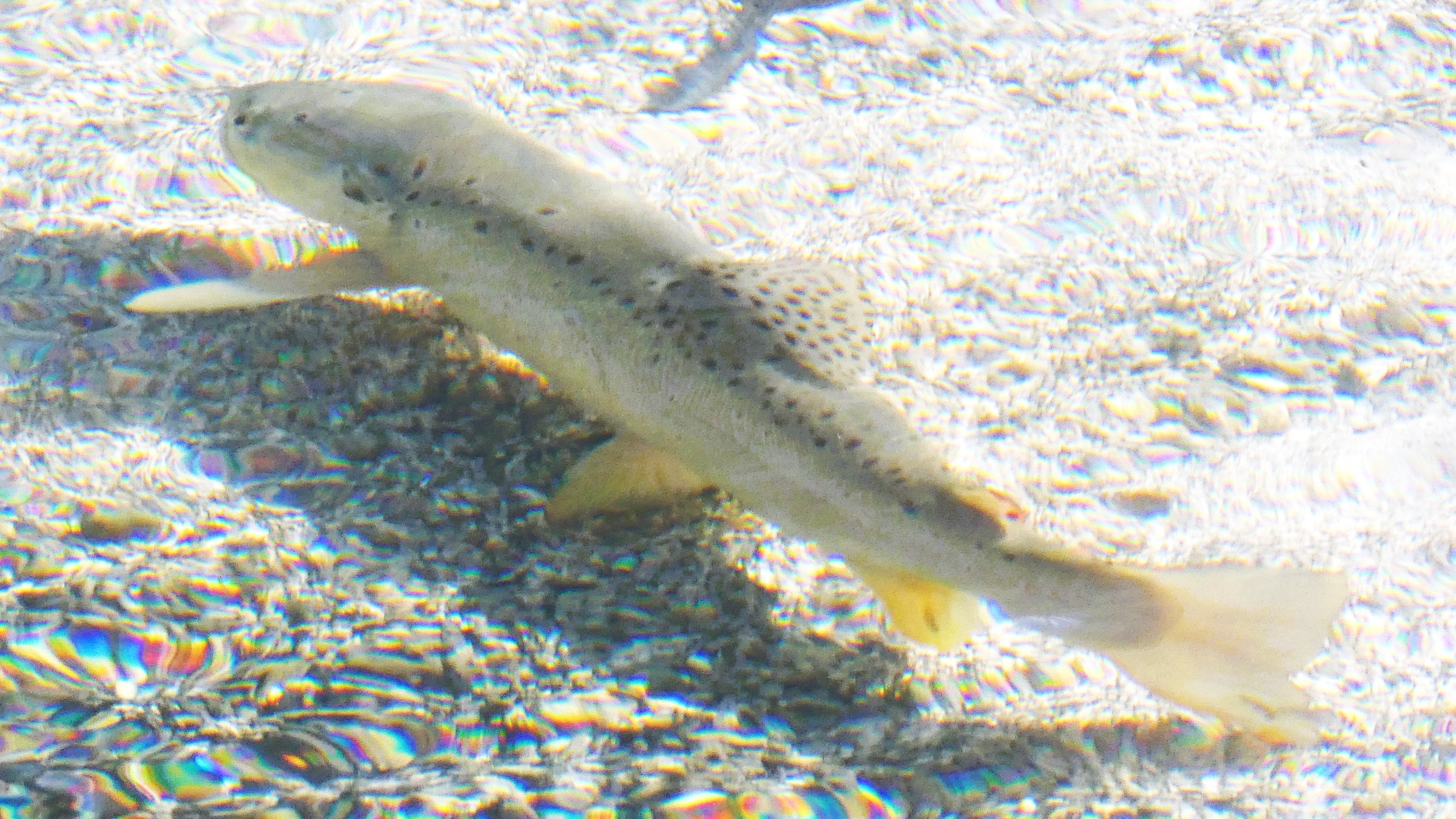
|
There is a small population of wild Brown Trout in Botany Bay. Trout feed primarily on invertebrates that live in the stream or lake. Some favourite trout food includes the freshwater shrimp (Gammarus), members of the mayfly family (Ephemeroptera), and caddis flies (Trichoptera); these are all found in the stream and monitored in our regular kick samples for The Riverfly Partnership. In early November we see the trout moving upstream to spawn. Trout lay their eggs in nests in stream gravels, known as redds. The female (hen) builds the nest, usually between November and January when the water is cold and carrying lots of oxygen (which the eggs need to hatch). In 2015 we had a visit from Andy Thomas from The Wild Trout Trust who advised us on ways to improve the passage and habitat for the trout. In 2017 we received an award from The Wild Trout Trust for our restoration project.
|
|
2: Brown Long-eared bat
|
|
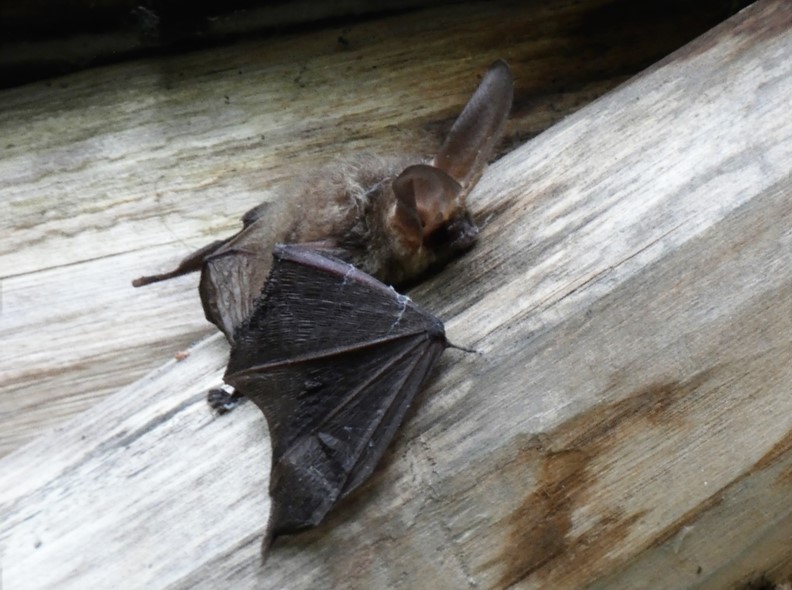
|
(Plecotus auritus) Fourteen species of bat have been recorded at Botany Bay. The Brown Long-eared Bat catches food by plucking insects from surfaces such as leaves and may hover to do so. This species may be hard to detect with a bat detector as they echolocate at very low, quiet, frequencies. In summer they often roost in buildings, and this individual was found in the roof of the Botany Bay shelter.
|
|
3: Purple Emperor
|
|
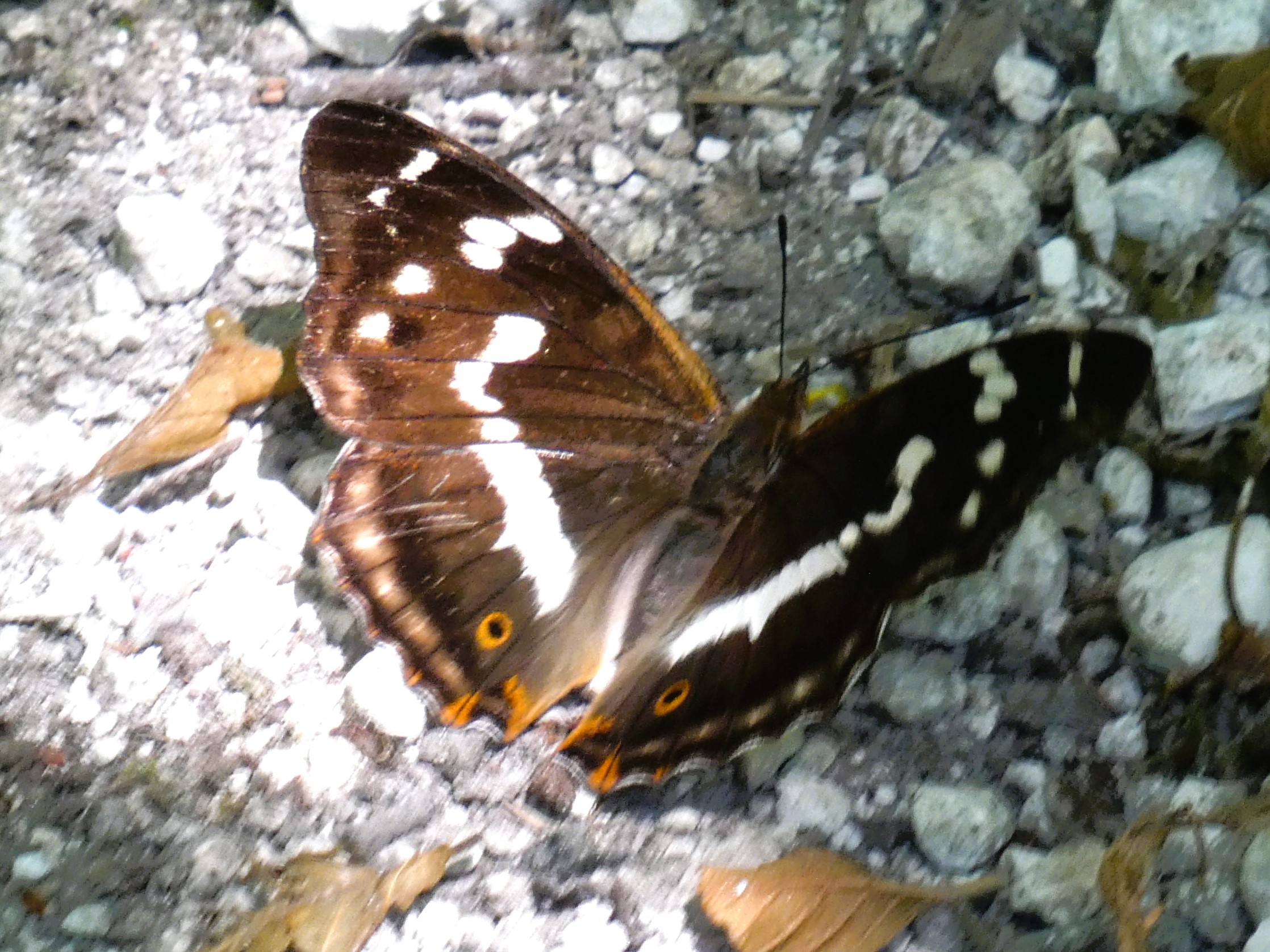
|
(Apatura iris) This is the largest of the British butterflies, the female being larger than the male, and may be found flying from late June to early August. The males are an iridescent blue, but the females a rich dark brown. The males spend most of the flight season high in the canopy, often in groups, overlooking the larval food plant, sallow, searching for females. Occasionally the butterflies come down to the ground to take minerals from mud or decaying materials, such as the one depicted here.
|
|
4: Prince-of-Wales Feather-moss
|
|

|
Leptodon smithii - on Hazel and many Ash and Field Maple trees. Local on old trees, mainly Ash, in calcareous districts.
In 2015 Tom Ottley recorded the bryophytes in Botany Bay and comments that "Epiphytes abound and a feature of the site is the large quantity of the scarce Leptodon smithii, a rather local southern species in this country. It was found on many trees of Ash, Field Maple and Hazel”
. Drawings by Sue Rubenstein
|
|
5: Collared Earthstar
|
|

|
The Collared Earthstar, Geastrum triplex, is a most curious fungus. We were very pleased to find it at one spot in the woodland in early autumn 2022. It develops underground as a hard spherical body up to 5cm diameter. The upper surface ruptures and in peeling back it pushes itself to the surface. Inside is the more delicate spore sac with a vent at the top. Wind, rain and other disturbances help to expel the spores. The ones we found persisted well into winter. The ‘collar’ is the remains of the base of the hard outer skin. The spore sac often appears to be sitting on a saucer. The ‘star’ is formed by the bent back triangular top sections.
|
|
6: Common Spotted Orchid
|
|
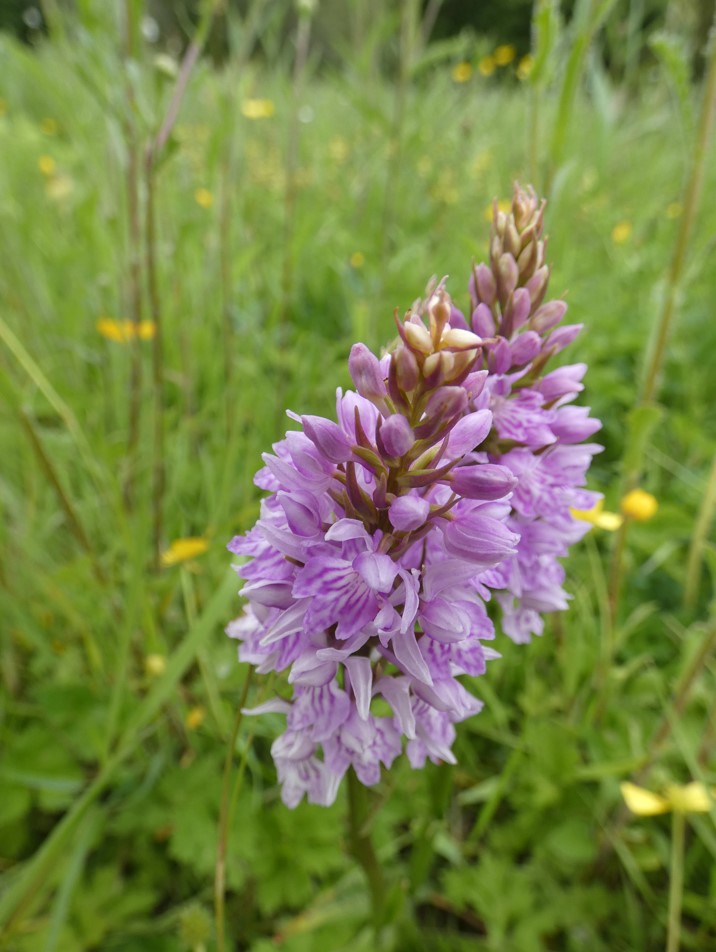
|
(Dactylorhiza fuchsia) Although one of the commonest orchids, there were few at Botany Bay until part of the meadow was developed for wildflowers. Common Spotted Orchids are now on the increase there. This year a single Pyramidal Orchid appeared in the same area.
|
|
7: Spotted Flycatcher
|
|
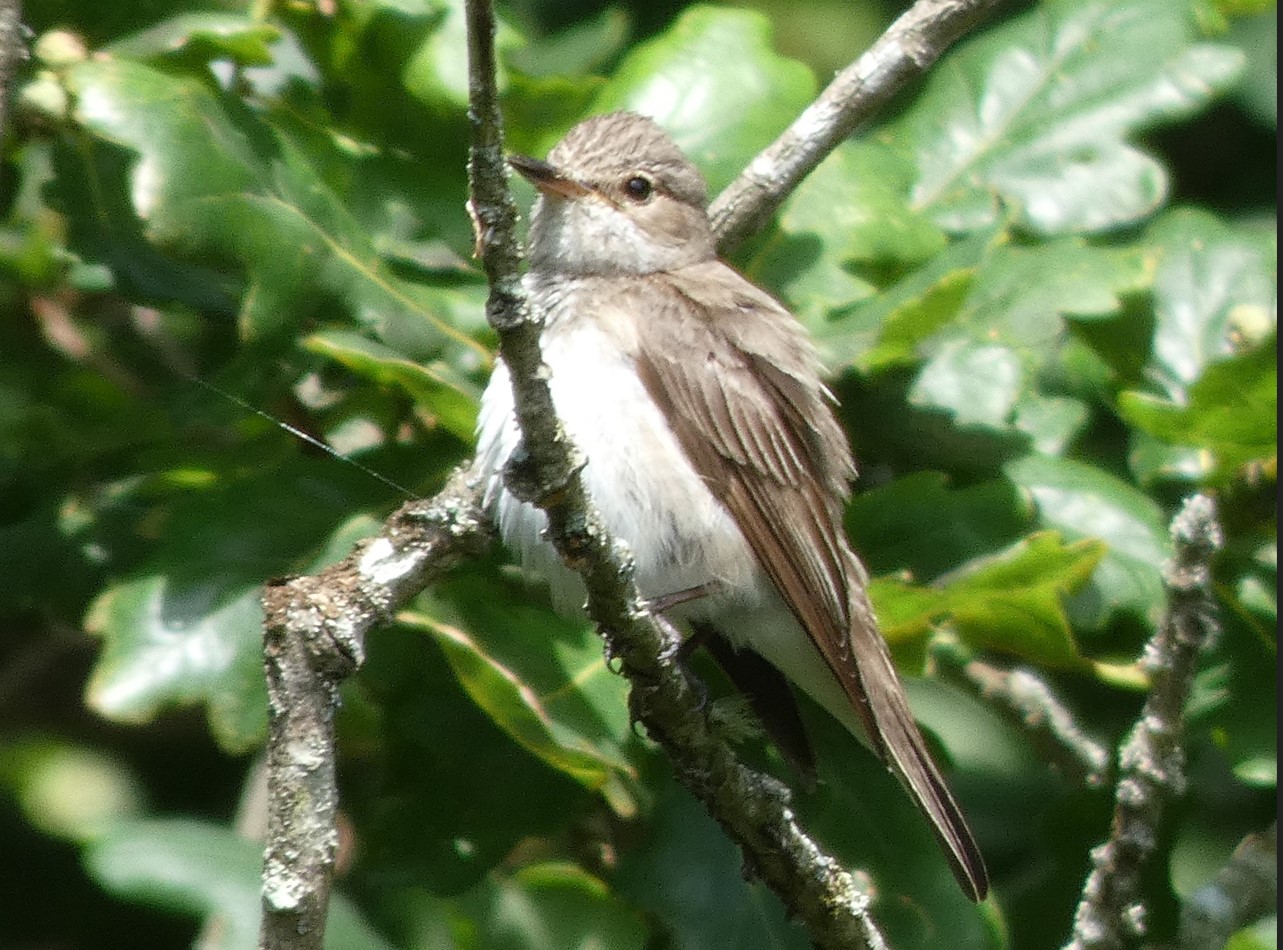
|
(Muscicapa striata)
This charming summer visitor has declined by 92% since 1960 and so is red listed. In the past it bred regularly at Botany Bay, but now occurs annually on passage. In recent years it has been most often seen over the stream where it enters the lake by the triple ponds. Its frequent forays to catch flying prey make it easy to sight.
|
|
8: Beautiful Demoiselle
|
|
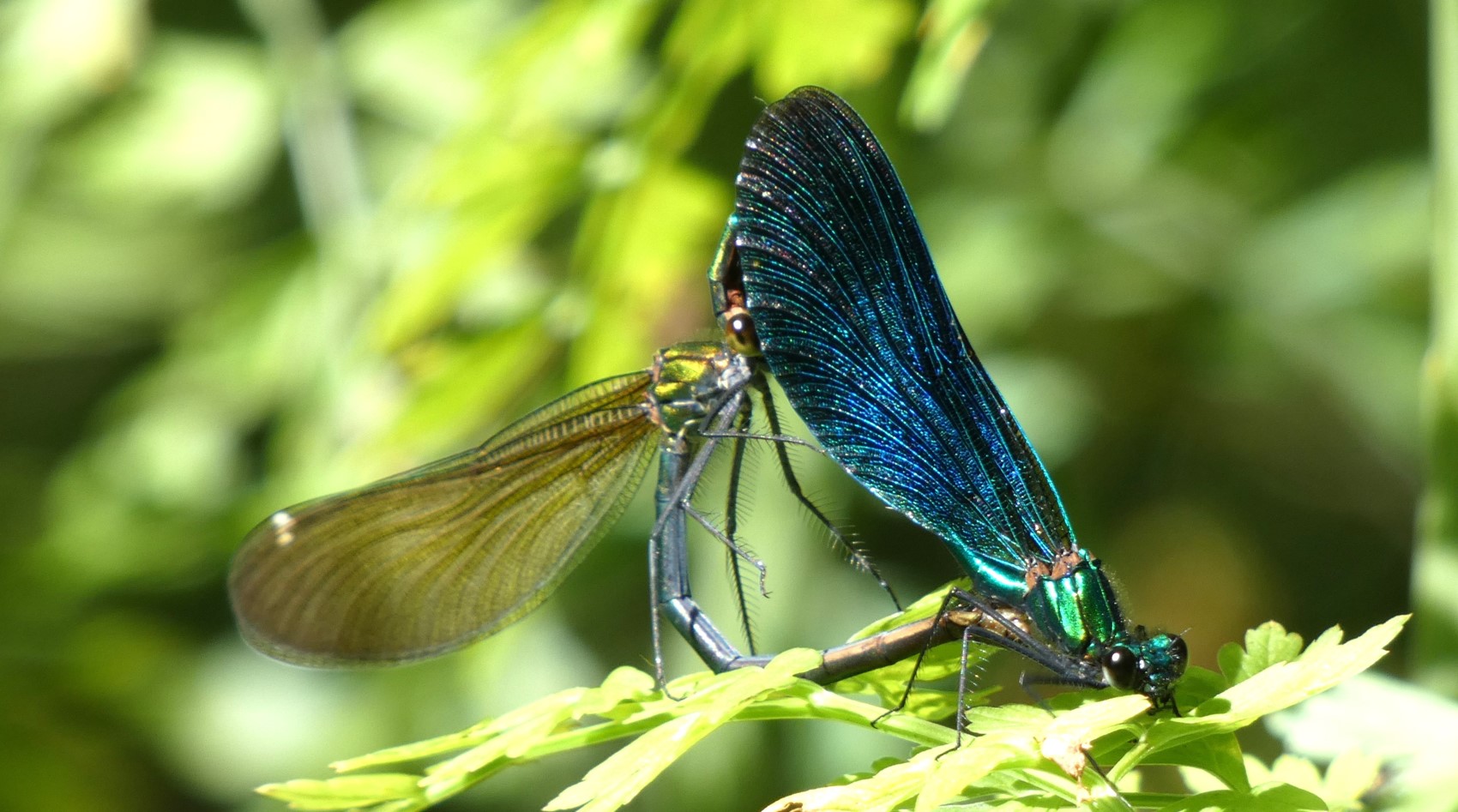
|
(Calopteryx Revirgo) These are stunning damselflies, the male with metallic blue body and wholly dark-coloured wings, the female with metallic green-bronze body and translucent pale brown wings. Beautiful Demoiselles prefer running water with shingle bottoms, while the similar Banded Demoiselle prefer slow running waters with a muddy bottom. Both species are found at Botany Bay and may be most easily seen on the stretch of the stream between the two bridges. This photo shows a mating pair in the ‘wheel position’.
|
|
9: Canary-shouldered Thorn
|
|
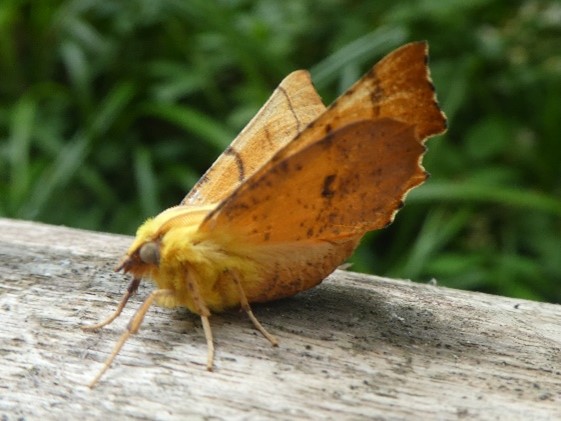
|
(Ennomos alniaria) On the evening of 13 August 2021, we ran three Robinson Mercury Vapour (125w) moth traps among mixed woodland, meadows, chalk stream and ponds. We recorded over 100 species among them this attractive Canary-shouldered Thorn. Data has been entered into iRecord and passed to the Sussex Biodiversity Record Centre. This moth is present in Sussex from July to early October. The larvae feed on Birch, Alder, Sallow and Lime all found at Botany Bay.
|
|
10: Fairy Parachutes
|
|
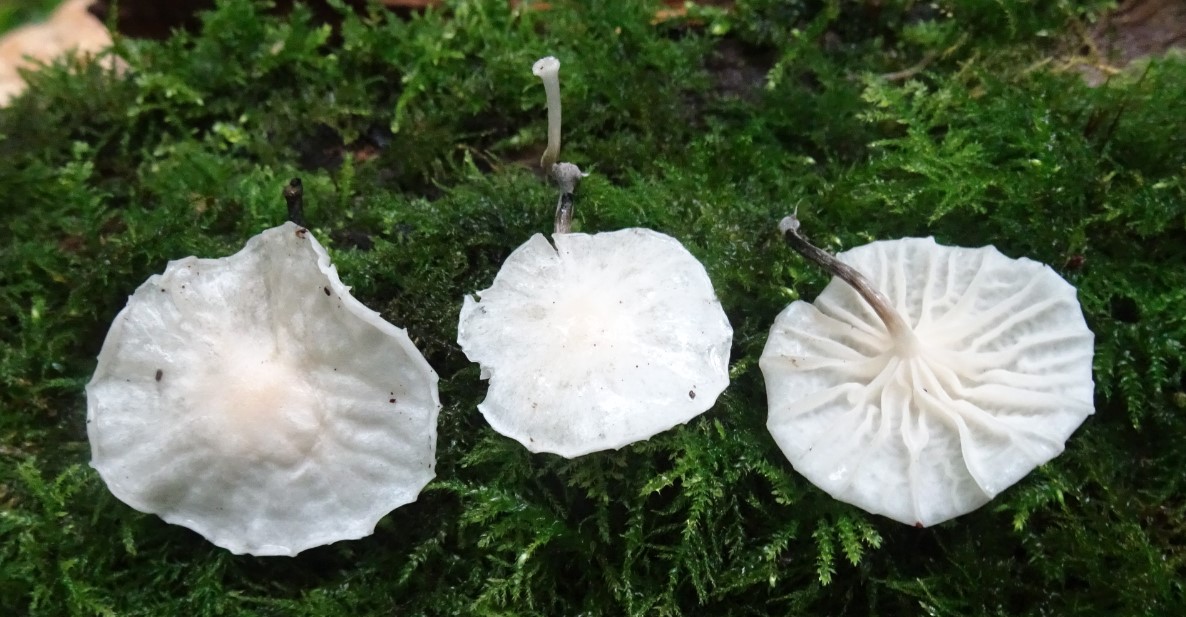
|
Fairy Parachutes, Marasmiellus candidus, are very delicate fungi only about 1cm diameter. They often grow on twigs and other woody debris. At Botany Bay we found them massed on a large fallen willow trunk. A very similar but commoner species growing here is the Collared Parachute, Marasmius rotula. This has a ‘collar’ at the top of the stem which the Fairy Parachutes do not.
|
|